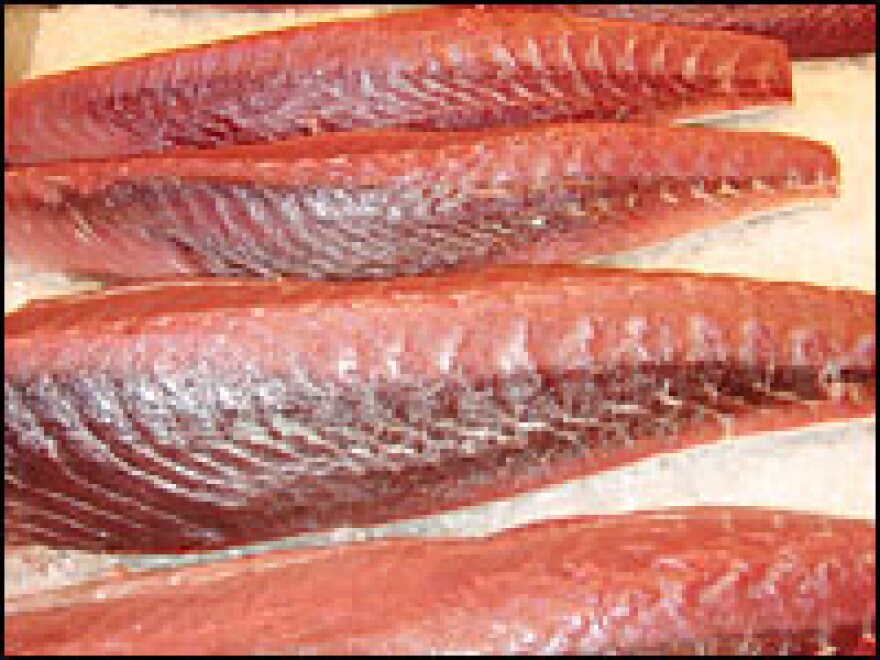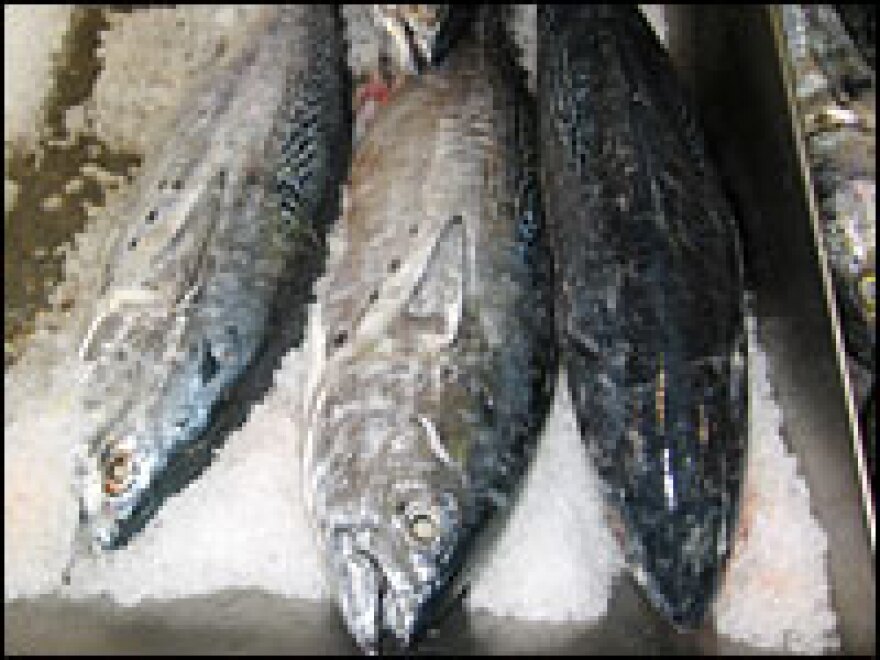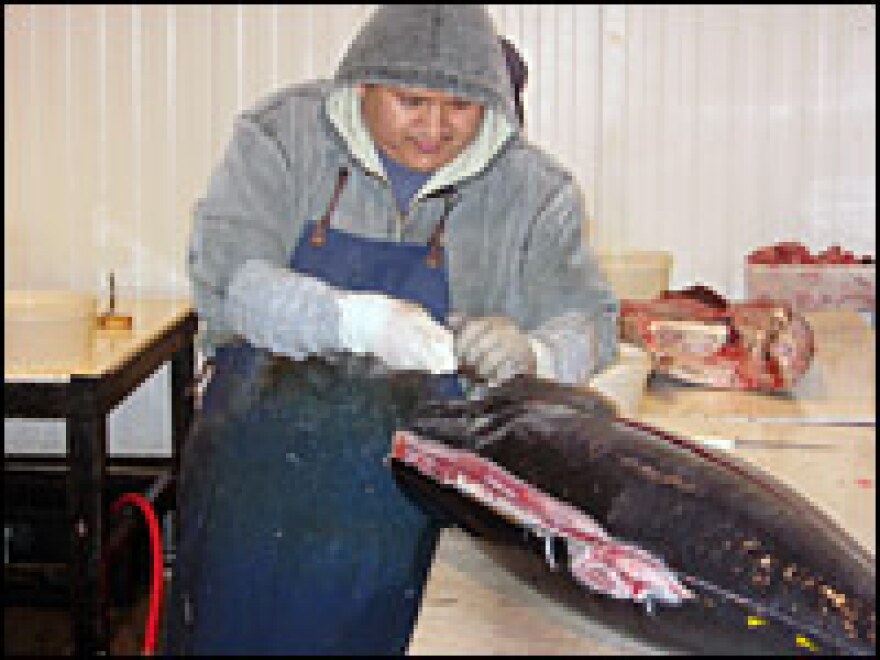


Over the summer, seafood chef David Pasternack paid NPR a visit. He owns Esca, a popular seafood restaurant in New York City. His signature dish there is crudo — raw fish served Italian style, with a drizzle of olive oil and lemon juice and a sprinkling of salt.
Now, Pasternack takes Michele Norris on a 2 a.m. shopping trip at the Fulton Fish Market in the Bronx and shares advice on picking up fresh seafood.
The 400,000-square-foot warehouse is filled with rows and rows of fishmongers, and it is freezing. Everything is on ice, since freshness is key. Scores of forklifts, stacked high with crates, buzz around like dragonflies, forward and backward.
Pasternack is right at home, greeting various vendors by name and getting the rundown of what's available.
For whole salmon, the chef advises looking for intact scales that have a natural slime. Touch the fish: It should be nice and firm. For filets, he says to look for firm flesh that has a clear shine to it.
The best cut is the belly, Pasternack says. It has more fat and therefore is tastier and more forgiving when it's cooked — it's less likely to get too dry.
For halibut, Pasternack checks the coloring of the flesh to make sure it's not milky. He wants to be able to see right through the meat.
One of the worst things you can do while shopping for seafood is to come to the market already set on what you plan to buy.
"You can't always go to a store and say, 'OK, I'm going to buy swordfish.' If the swordfish doesn't look good, maybe you should try something else," Pasternack says.
Another piece of advice: Fish should be kept well chilled.
When it comes to seafood, Pasternack says 50 percent to 75 percent of what you buy is the quality of the purchase. The other 25 percent to 50 percent is how you handle it.
But Pasternack's No. 1 rule is get to know the person who handles seafood at your local market. Find out what they would serve with pride at their table, and don't be shy about asking questions and requesting special cuts.
Copyright 2023 NPR. To see more, visit https://www.npr.org.


